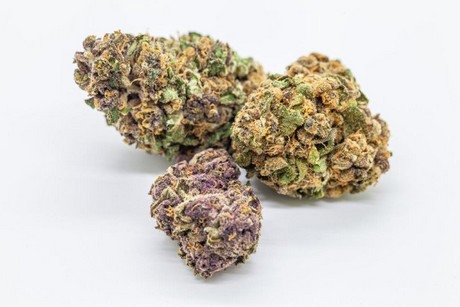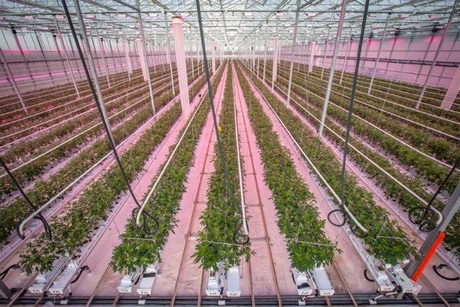Careful planning is one of the main factors leading to efficiency. This is especially true when it comes to large-scale manufacturing, either in a factory or in an agricultural operation. ‘Traditional’ horticulture growers are renowned for the attention they put in the smallest details of each of the processes that characterize their operation. Therefore, it does not come as a surprise that cannabis growers are looking up to their horticulture colleagues on how to run a large-scale cultivation smoothly. This surely is the case for the Canadian medical cannabis producer Medisun. “We know which point we are at, anytime,” says Laust Dam, COO of Medisun. “This is of the utmost importance to a perpetual cycle operation like ours. We have 250,000 plants in our facility, and harvest 1,000 kilograms of dry cannabis buds, per week, which makes for 200 kilograms of dried A quality flowers harvested each day.”
Like a symphony
It goes without saying that it’s critical that such a machine is well oiled, and that every element plays its part at the right time. “I have to be able to say that in 5 weeks ahead from here, I have an area ready for flowering,” Laust remarks. “My cloning job, my rooting job, when are done go into the veg areas where they stay for about 3 weeks, so that I know that in approximately 5 weeks my flower area must be ready. It is up to the planning to keep up in completing given processes in a specific timeframe, otherwise the ripple effect will propagate throughout the operation.” And indeed, such a planning first of all starts with the cultivar selection.

“We started with a few cultivars,” he explains. “But we are now diversifying because of market demands. Yet, we are very specific on choosing the cultivars that can grow according to the same system, that have roughly the same flower and harvest time. In our last production, we did 8 genetics at all time, and we can actually do more than that. We have more than 40 genetics in our bank we can choose from which would allow us to keep our perpetual cycles.” Selecting genetics is not easy for cannabis growers because of the regulations in effect. “Health Canada has set up a rather complicated system for obtaining genetics,” Laust says. “We can only acquire genetics that other LPs also use, and only a few growers are allowed to sell them. We do have the options of buying seeds, but that would also include some breeding and phenotype hunting ourselves as it takes some time to make them fully stable. Besides, there is the possibility to buy clones directly, but that can be very expensive, compared to the cost of one seed. At the same time, also starting from seeds can be expensive at the end of the day, because of the aforesaid phenotype hunting necessary.”

Greenhouse-grown cannabis
Medisun grows its cannabis in a greenhouse. “We are proud that we grow our cannabis in the sun,” Laust remarks. “We use hydroponics with customized nutrition recipes that we produce in-house. We grow in Grodan rockwool, and we are very proud and happy with our artificial lights supplied by Oreon. We work with them because they have the most efficient lights on the market. We use artificial light when we need to boost the light levels: we have a target of integrated light levels, and when there’s not enough sunlight, we supplement that with our Oreon lights. On top of this, the whole facility is controlled by Priva computers, which enables us to control every small element in the operation. Additionally, we have an expansion of our company, where the greenhouse is built by Havecon and the heating/cooling systems are designed and installed by JV Energy. This expansion should be in production soon.”

Among the elements that need to be utterly controlled, pest management ranks in the top list. “We have a very big IPM department,” Laust says. “Our entomologists scout the plants at least 3 times per week: the plan is to be ahead of finding pathogens before they get out of control on the plants. But we also use biological crop protection by Biobest and Koppert, as well as some products by Crop Defenders.” It is necessary for IPM programs to be this intensive, especially in a time when pests can become a huge problem in Canada and with very few tools and pesticides, to control them.
Just like the majority of cannabis growers, Medisun too is hoping that an upcoming federal legalization in the US would open up even more market opportunities. “All Cannabis growers will gain greatly from that,” he says. “We can’t be sure when that’s going to happen. What we are sure of is that Canadian LPs are successfully contrasting the illicit market: last year, illicit market shares amounted to 80%, this year it is 50% or lower. Develupment in the cannabis space are definitely going in the right direction, which is generating a lot of optimism, both here and in the US. We are one of the biggest LPs, and we are getting ready to explore the global market.”
For more information:
Medisun
745 Richmond Street, Chatham, Ontario
+1 855 633 8786
medisun.ca
